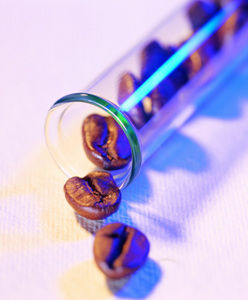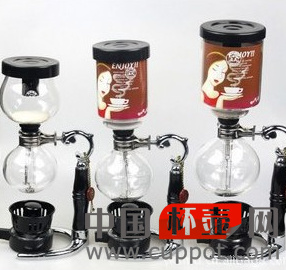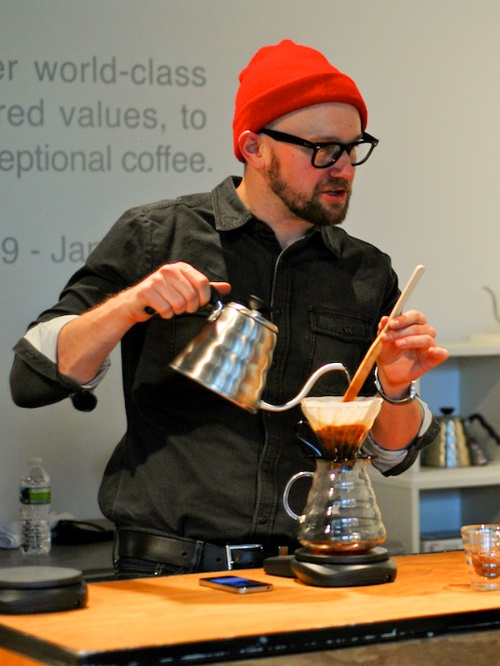About coffee beans Analysis of the main contents of a coffee bean what are the ingredients in the coffee bean

Caffeine
Caffeine is the most eye-catching of all the ingredients of coffee. It belongs to a kind of phytoxanthine (animal muscle component). It has the same properties as theophylline contained in cocoa, green tea contains the same theophylline, and the percentage of reduction after baking is very small. Caffeine has a very extensive effect. It will affect various parts of the human brain, heart, blood vessels, gastrointestinal tract, muscles and kidneys. The right amount of caffeine will stimulate the cerebral cortex, promote sensory judgment, memory and emotional activity, and make the myocardial machinery more active. Vasodilation enhances blood circulation and improves metabolic function. Caffeine can also reduce muscle fatigue and promote digestion (digestion of food) fluid secretion. In addition to this, because it also promotes the kidney function to help the body expel excess sodium ions (chemicals that hinder the metabolism of water molecules), caffeine will not accumulate in the body like other narcotic or excitant substances (narcotic drugs, oil (oil and food) paint solvents, stimulants, etc.) and will be excreted in about two hours. The biggest bitterness of ─ in coffee flavor is caused by caffeine.
Tannic acid
After extraction, tannic acid will turn into a yellowish powder, which can easily blend into water, and after boiling, it will decompose and produce pyrosylic acid, which will make the coffee taste worse, and if it is soaked and left for several hours, the color of the coffee will become thicker than when it was just soaked, and it is also less tasty, so there is the saying that "it is best to drink it as soon as possible."
Fat
The fat in coffee plays a very important role in flavor. It is found that there are many kinds of fat in coffee, the most important of which are acidic fat and volatile fat. Acidic fat means that the acid in fat varies with the type of coffee, and volatile fat is the main source of coffee aroma. Once the fat contained in roasted coffee beans comes into contact with the air, chemical changes may occur and the taste and flavor will become worse.
Protein
The main source of calorie is protein, and like dripping coffee, most of the protein will not dissolve, so no matter how much coffee is drunk, the nutrition is limited, which is why coffee will become a sacred product for people who lose weight (weight loss food).
Sugar
Without sugar, you will not only feel the bitterness of caffeine and the sour taste of tannin, but also feel sweet, which is caused by the sugar contained in the coffee itself. After baking, most of the sugar will be converted to caramel, bringing a unique brown to the coffee.
Mineral substance
There are lime, iron (iron food), sulfur, sodium carbonate, phosphorus, chlorine, silicon and so on. Because the proportion is very small, it does not affect the flavor of coffee and brings only a little astringency.
Crude fiber
The fiber of raw beans will be carbonized after baking, which combines with the caramelization of sugar to form the hue of coffee, but the fiber turned into powder will have a considerable impact on the flavor of coffee. Therefore, we do not encourage the purchase of powdered coffee beans, because it is less able to taste the flavor of coffee.
The bitter acid and mellow flavor of coffee
The color, aroma and taste of coffee are caused by some complex chemical changes that take place during the baking process. Therefore, raw beans must go through appropriate chemical procedures to achieve the most balanced state of its essential ingredients in order to be regarded as the best baked beans. The aroma of coffee changes with the heat, so the baking time should be shortened as much as possible, and the heat should be controlled at the lowest temperature that can produce effective chemical composition of coffee beans, that is, the time and heat of the shortest process, so that coffee beans can produce the most suitable composition ratio.
Aroma is the life of coffee quality, and it can best represent the coffee production process and baking technology, as well as the climate, elevation, variety, refined treatment, harvest, storage, and the appropriateness of baking technology in the consuming country. The results of gas chromatographic analysis showed that the aroma of coffee was composed of acid, alcohol, acetaldehyde, ketone, ester, sulfur compound, phenol, nitrogen compound and nearly hundreds of volatile components. Generally speaking, fat, protein and sugars are important sources of aroma, while lipids blend with the sour and bitter of coffee to form a smooth taste. Therefore, the disappearance of fragrance means that the quality is getting worse, and the relationship between aroma and quality is very close.
Source:
Coffee encyclopedia
Important Notice :
前街咖啡 FrontStreet Coffee has moved to new addredd:
FrontStreet Coffee Address: 315,Donghua East Road,GuangZhou
Tel:020 38364473
- Prev

The main points of making a cup of siphon pot coffee: what are the stirring methods and techniques of the siphon pot?
Guide: what are the stirring methods and techniques of the siphon pot? In the past, people used to stir vigorously, but more and more people began to reach a consensus on stirring skills, that is, it is not advisable to stir vigorously, but gently when stirring. In the relevant information of the cup pot net, we have described in detail the principle of the siphon coffee pot, how to use the siphon pot and the matters needing attention in making coffee.
- Next

Introduction of two common methods of Japanese hand punching and detailed analysis of the main points different from American hand flushing
Personal recommendation: coffee for 2 people, water ratio 1:15 basic rule: when the water temperature exceeds 90 degrees Celsius, the coffee is mixed or sweet or bitter too much, the best time to complete a hand brew within 3 to 5 minutes. The brewing time is less than 4 minutes, which is suitable for fine grinding. The brewing time is more than 6 minutes, which is suitable for thicker grinding method. First, the most gorgeous method of penetration, the difficulty
Related
- What is the meaning of lactic acid fermentation with coffee bean treatment?
- How to judge the state of foam by sound?
- How does the latte pull out the unicorn pattern? Come to get for a little trick to improve the flower pull!
- Will flower pulling affect the taste of the latte?
- Do you know the history of coffee?
- The difference between honey treatment and sun washing what is raisin honey treatment?
- What kind of milk can a novice use to make coffee foam to keep the foam longer? The correct method and skills of milking tutorial sharing
- Why do washed coffee beans taste sour? Flavor characteristics of washed Coffee
- Introduction to the skill of how to practice the size and height of water injection around the circle of hand-brewed coffee
- How do beginners practice coffee flower drawing from scratch?

